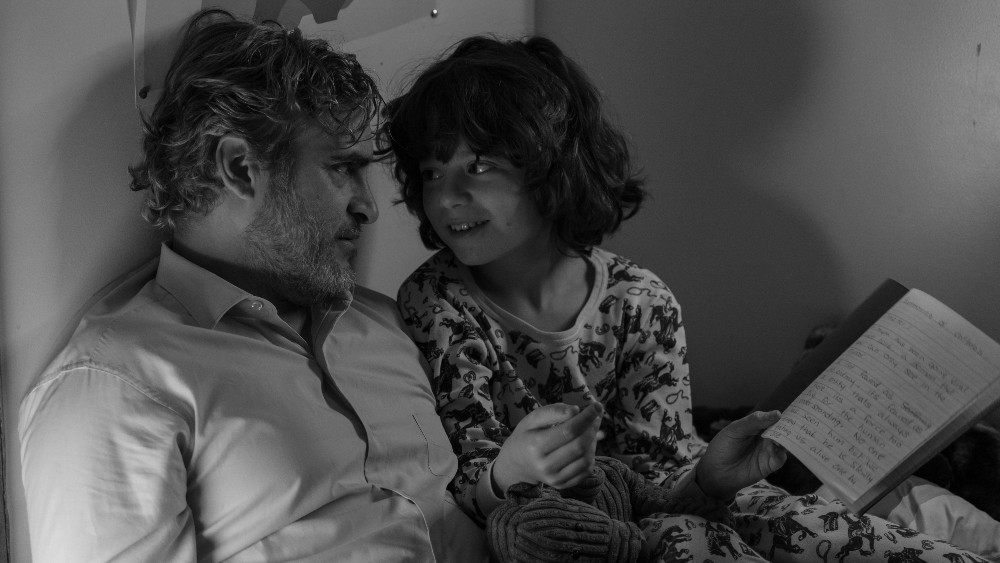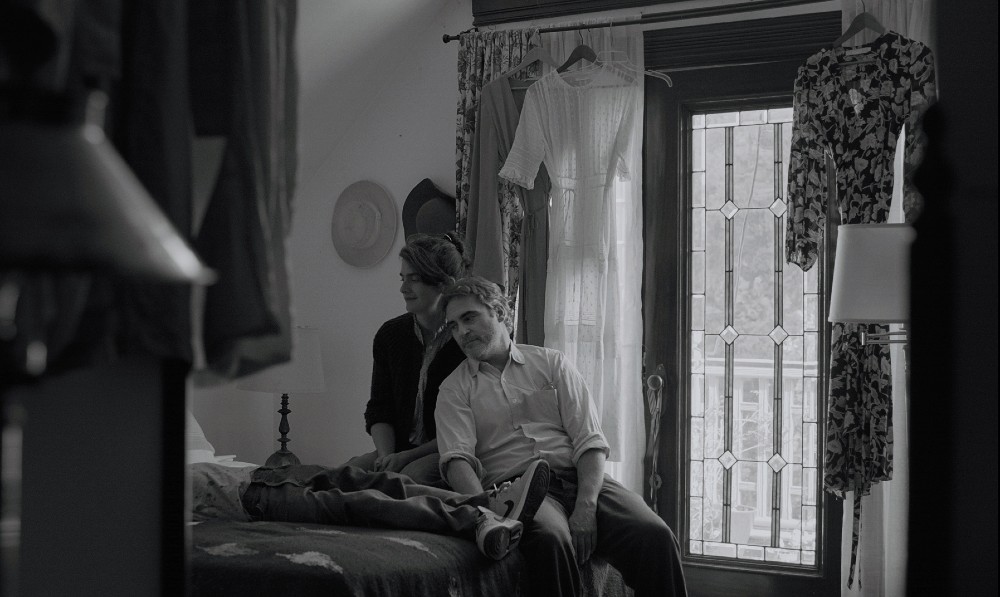
Every once in a while, directors come along whose work’s focus is distinctively human. The most obvious, recent example of this is Woody Allen, whose body of film’s attention is almost entirely on human relationships, such as family, friendship, and romance. Many of these filmmakers though, including without question Allen himself, as well as others like Almodóvar, are solipsistic in nature, telling stories mostly about their own experiences. A standout, therefore, is the far less-known, but at least equally as impressive, independent movie director Mike Mills. His latest film, the family drama C’mon C’mon, starring Joaquin Phoenix, is a beautiful conclusion to a trilogy he began with 2010’s Beginners and 2016’s 20th Century Women, though this movie is—perhaps tellingly—clearly the most personal one.
The film focuses on Johnny (Phoenix), a radio journalist, who travels across the country interviewing young people to ask them their views of modern issues, mostly the prospects for the future of America and the world. One of his early stops takes him to Los Angeles (though we will soon discovery that C’mon C’mon is a New York love story type film, much like Allen’s), where he decides to visit his sister, Viv (Gaby Hoffmann). Johnny and Viv have not had a close relationship for the last few months, for reasons that are not immediately explained, but that become apparent as the script’s layers unfold under the steady hand of Mills himself.
After a few days of tense but earnest family rapprochement, including Johnny getting to know his precocious young nephew Jesse (the impressive young Woody Norman), Viv, out of options, asks Johnny for an unthinkable favor—can he watch over Jesse for two days while she takes care of family business in San Francisco. Jesse’s father, now estranged from Viv, is having another mental breakdown, and needs Viv’s help. Viv, herself neurotic, is drawn into this toxic relationship, while the contemplative Johnny keeps mostly quiet. Johnny agrees, even though he is at first reluctant given the pressure that Viv exerts over Jesse’s upbringing, as well as the child’s moody vicissitudes. To make matters worse, two days turns into two weeks and then more time, requiring Johnny to take Jesse with him back to New York and, later, on other cross-country trips in search of more interviews about the future of humanity.

As you may imagine, Jesse and Johnny develop a quiet but sincere bond of friendship and love throughout the course of their time together and the various little events that unfold—Jesse getting lost in the streets of New York, the two going out for dinner or to buy hygiene supplies for the boy. Little is said with words, almost everything is conveyed through the young Jesse’s supposedly disinterested but actually quite attached gaze, and through Phoenix’s quiet affectation. This is the delicate, subtle Phoenix—not the type of performance that nets one Oscars like say, his Joker performance—but arguably the most deserving one.
Unlike his prior two films, Mills chose to shoot C’mon C’mon in black and white. The reason becomes quickly obvious—the story he tells, in contrast to the other two, is personal, and it lives in his memory. But the black and white that cinematographer Robbie Ryan utilizes is deceptive. Ryan has had a good few years after providing the intricate shots behind The Favourite and Marriage Story. But this film may be his best achievement yet because, perhaps together the powerful, jump-from-the-screen performances from Phoenix and Norman, he creates a palette so rich and alive that it seems to be in color after all. Mills’ memory of his relationship with children may be in black and white, but your memory of C’mon C’mon will be in vivid tones.
What is ultimately most effective about C’mon C’mon, however, is Mills’ tender, simple, and honest script. Beginners focused on aging, on finding a new meaning to life in its final act. 20th Century Women was about what the title would imply, the desires, passions, anxieties, and motivations of certain types of women, mostly in our modern society. That Mills was able to so deftly and convincingly portray what drives two groups of people to which he does not belong is alone a testament to his ability to understand human emotion. This film may seem, by contrast, to be a layup, since Mills does have children and has spoken about the complicated process of raising them.

But, the fact that Mills has for the first time put his own firsthand experience onto the page only makes the end-result that much richer. Mills’ script captures the fundamental divide between child and adult, the reason raising children must be both enthralling and infuriating. Children do not yet have a fully developed consciousness about right or wrong, about survival and self-preservation. They act instead on instinct, while the world around them teaches them how to become aware of these prerogatives, and how to deal with them. In simplistic terms—children are innocent, which can be as terrifying as it is endearing. In the film, the young Mr. Norman as Jesse, with his messy hair, his simplistic demands, his outrageous tantrums, embodies these realities perfectly.
The adults, by contrast, are cynical, self-aware, and for the most part practical. But no adult can ever fully sever his or her connection to their own childhood. Phoenix as Johnny, with his longing eyes, his slow demeanor, also perfectly conveys all of this. Self-discovery does not end with adulthood, and Johnny’s journey is enhanced by getting back in touch with childish innocence, through Jesse. That experience creates a bond between them, and awakens new types of love in Johnny.
In simplistic terms—it is a beautiful story of the improbable but unbreakable love that arises between a child and a grownup; a simple part of life we take for granted but that we are reminded of in this touching film.
Grade: A
C’mon C’mon will hit theaters across the country on November 19, following its world premiere at the Telluride Film Festival.
All photos courtesy and copyright A24. Photographers as noted.
Also, look for our interview with Director Mike Mills later this week.





